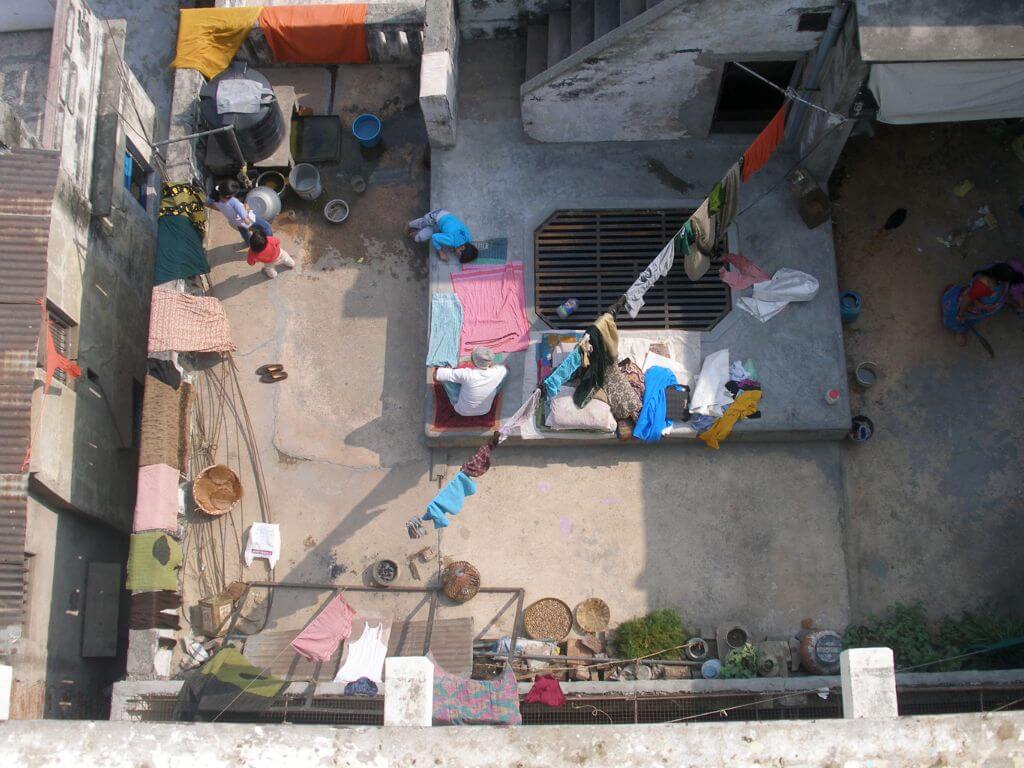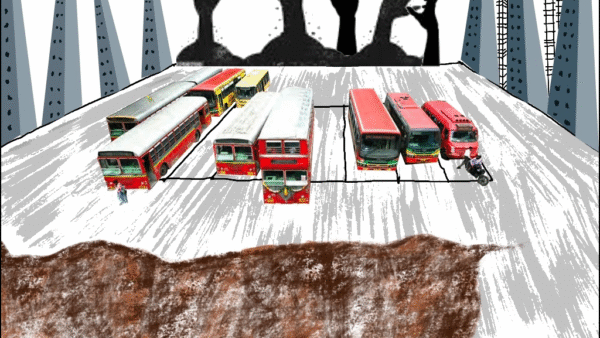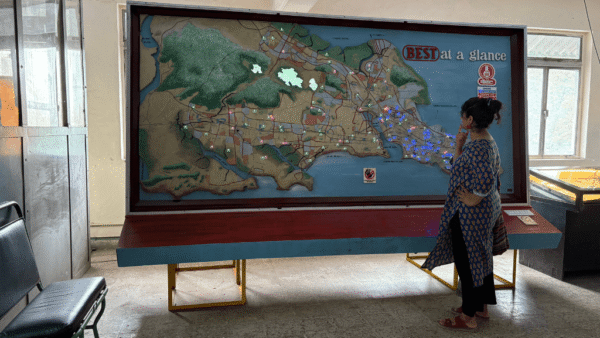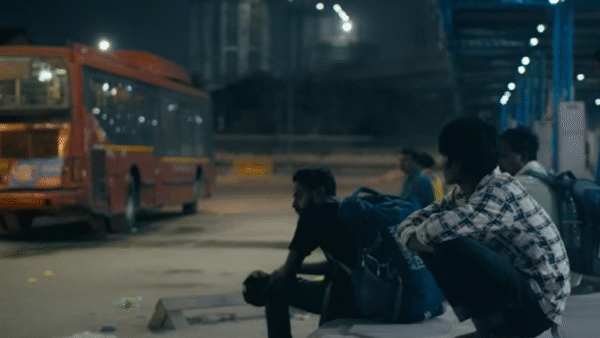Urban design and planning go hand in hand with health. Whether in India or around the world, the idea of making urban habitats through design and planning started with health and well-being as key concerns. This is evident from the plague in India in the late 19th century.[1] or the London fire incident.[2] The built environment has a role to play in people’s quality of life; there is, indeed, a relationship between the two.
In simpler language, having fresh air and light in your house is directly proportional to your physical and mental health, to your mood or happiness. Design choices have positive or negative outcomes.[3] In cities, people have lights switched on in their houses throughout the day because of insufficient or poor location of window openings. If a house has a veranda, that is probably the only space with some natural light. Most rooms in modern houses are closed to shut out dust and noise, which results in people living with artificial lighting.
Lately, I have been living in the bustling town of Barasat in 24 Parganas, West Bengal. I find most houses without natural light and I relate this to at least one person in a household with a chronic illness. It is not an exaggerated relationship. If we, as urban planners or designers, are not relating people’s health and happiness to the built environment, then we are missing something fundamental. As in a house, so in a neighbourhood and a city.
The role of urban planning and design in ensuring people’s health and well-being needs to be taken seriously. It begins with the pedagogy in architecture and planning schools. Students have to be trained to see the direct relationship between urban planning-design and people’s health, between the natural environment and people’s well-being. We have to consciously design for good health rather than take them for granted. Once this interrelationship is acknowledged, people have to be trained and academic papers have to be brought into policy.
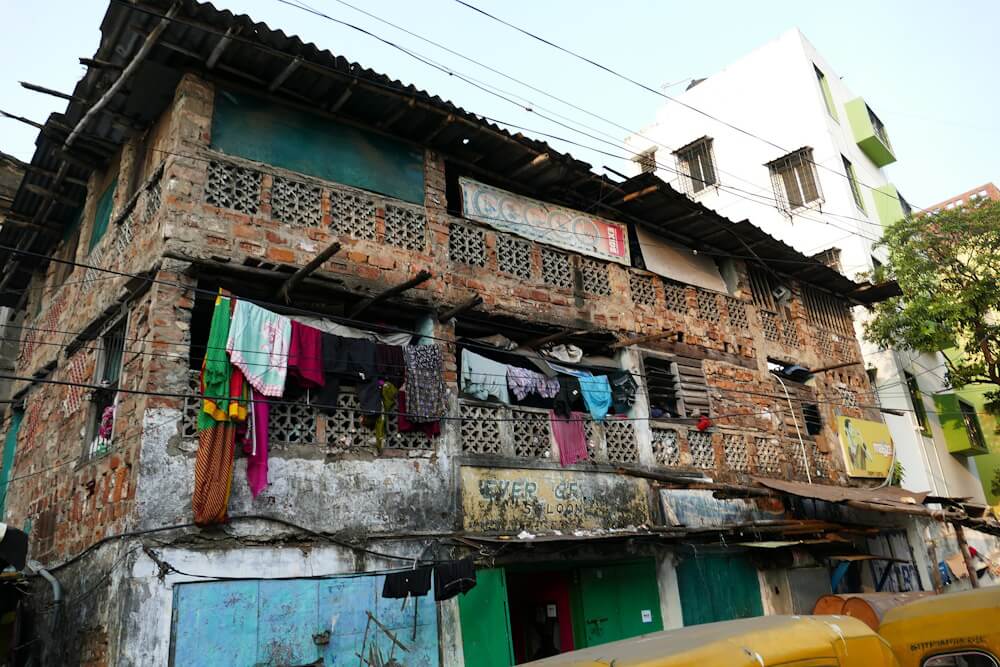
Photo: Xopolino/Wikimedia Commons
Good design brings good health
Studies have established a strong relationship between the built environment and health. London’s Low Emission Zones led to a reduction of 6-9 percent in air pollution and better respiratory health[4] while Barcelona’s “super blocks” prioritised pedestrians and bicycles over cars (and emissions) leading to positive outcomes[5] The co-relation between urban design and mental health is gathering force as studies show that a well-designed neighbourhood can promote physical activity, encourage relaxation and recreation, reduce stress levels and so on.[6] Just as cities are becoming centres of vector-borne diseases, they are also turning into hubs of mental ailments.
Let’s take the transition spaces we had in the past like terraces, verandas and balconies. These helped regulate indoor temperatures and allowed people to relax.[7] Importantly, they enabled interactions between people outside the home, where women and older people sat around and children played. These spaces were replaced, in apartment blocks, with entrance large lobbies leaving hardly any space for everyday interactions. Lobbies do not foster interactions because residents rarely hang around in them. This is reflected in the larger society too, as asocial behaviour, anxiety, and distrust about others.
Another example is the toilet which reflects the individualisation in cities. In an independent house, a toilet was built outside the living space for various reasons and there was one for all members of the house. It was a shared resource; people owed it to others to keep it clean. Now with a toilet in every room of a house, it is an intensely personal space with no obligation to share it with anyone, thus dividing even family members.
Another example is with light. My house in Ahmedabad has daylight from dawn to dusk; we used only four hours of artificial light in the night. It helped my work productivity and wellbeing. Here in Barasat, the lights have to be switched on from dawn; I find myself cranky all the time. This is not to suggest that people with natural light and air are the happiest but that good light and sunshine are important components of health. This deserves recognition in the way we design and build. Ironically, today natural light is blocked in buildings and artificial lights sold based on their likeness to natural light.
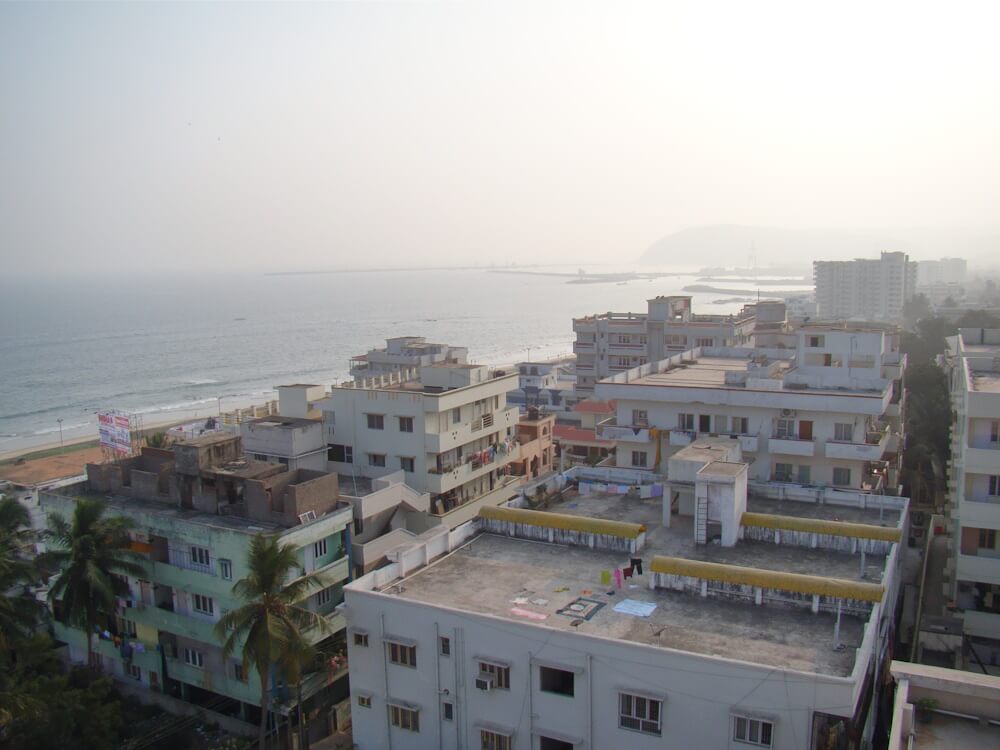
Photo: Pulkit Sinha/Wikimedia Commons
Boxed-in spaces, boxed-in thinking
People shape the built environment and it shapes them too. There is a strong relationship between the built environment and health issues like anxiety and depression, as studies show.[8] There is hardly any common ground for bonding and trust to be nurtured. “Social activities are dependent on the degree of permeability, which when low, gives rise to increased social interaction and activities, and connectivity and clustering coefficients are revealed to be important indicators of social activities.”[9]
This is a health indicator of the society too. For example, in my township, I have seen many toddlers grow into teenagers over ten years. I greet them regularly but they rarely reciprocate. There may be other factors but this is also a matter of sociability and the built environment. The way we build houses, housing complexes, and workplaces either encourages or discourages people to socialise. We need to understand that sociability or socialisation is a key determinant of people’s well-being.
What happens in houses also happens in townships. The self-sufficient gated complex is the true representation of built spaces becoming asocial and insular, an oasis with hardly any bonding with the world outside its gates. The long-term impact is that people buy into the belief that this is the safest way to live, a boxed-in thinking. In designing for security, we have designed for isolation. How can isolation be beneficial to health? The pandemic showed how isolation can lead to anxiety and loneliness, among other issues of physical ill-health.
Studies have led to the renewed understanding that mental health is related to our access and use of shared spaces. “We are witnessing a cultural shift in how people are talking about mental health…The pandemic has shown us just how essential our neighbourhood infrastructure is for well-being,” wrote Jenny Roe, director, Center for Design & Health; and Layla McKay, director, University of Virginia Centre for Urban Design and Mental Health. They called for “Restorative Cities” which puts mental health and social well-being at the heart of urban design, drawing “on thousands of multidisciplinary studies to offer a framework for how we can design our cities…with attributes such as spatial forms, colour, nature, water and streets which can contribute to mental health and well-being.”[10]
We have to evolve our own version in India. We have adopted the western model in which typical Indian elements in houses such as verandahs, small chowks and open spaces have been eliminated. If community spaces such as gardens are provided in housing complexes, they are ornamental where children are hardly allowed to play and adults rarely socialise. The western models do not work because we live in different climatic and cultural zones. For example, the windows of my Rotterdam house were mostly closed as it rained for many months of the year but in my Ahmedabad house, closed windows mean more air-conditioning which adversely impacts my health and the environment. As designers, we know this but we continue designing closed buildings, in a way, choking the society.
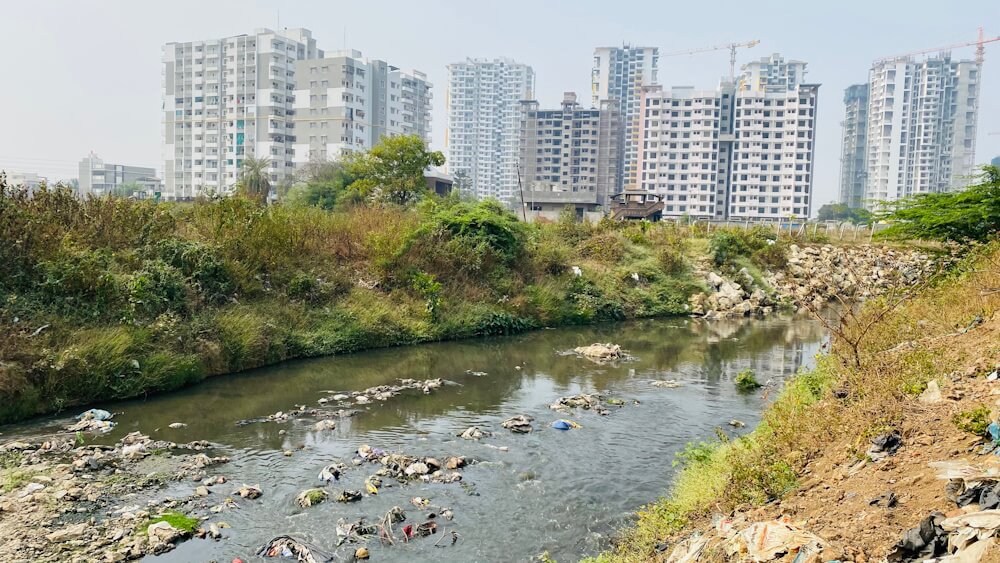
Photo: Ganesh Dhamodkar/Wikimedia Commons
What planners and architects miss
Architecture, urban design and planning have an impact on society but rarely is attention paid to their outcomes. The earliest towns, built before these disciplines determined the nature of spaces, have a higher sociability component.[11] The automobile revolution then and the digital revolution now brought about huge changes in the built environment. Spaces are not made for people but for possessions. The road is for cars, pedestrians have to fear for their lives. Except for air pollution lately, noise and smell are not factored into our health. Visual pollution of lights, hoardings, and ugly facades is accepted as the New Public Realm. There are no tools and techniques to even measure their impact on human well-being.
In the race to construct cities and mega projects, we are not acknowledging that mental illnesses like anxiety and depression are the outcome of urban planning and design. Physical ailments such as diabetes, heart problems, kidney and reproductive issues as a consequence of polluted air or water have been acknowledged but the relationship between the built environment and mental illnesses is yet to be fully accepted. If our spaces isolate us, if trust and sharing are not encouraged any more, if open and green spaces do not exist to soothe us, then people will feel loneliness, anxiety and exhaustion. By building such cities, we lose ourselves and our humanity.
“Indicators (spatial, sensory comfort, safety, security, privacy and social comfort) are linked to sub-indicators (access, distractions and views) and design characteristics (indoor climate, interior view, outside view, privacy, communication, noise, daylighting, temperature) which help in better connection of the built environment with individual’s mental health,” as this study points out.[12]
The way we built cities after the Industrial Revolution made us feel safe inside our little boxes. Climate Change, we believed, was happening outside. But did our building approach not accelerate the phenomenon and are we not suffering the consequences? Health, especially mental health, is on the same trajectory. To set this right, firstly, architects, planners and designers have to accept that we made a mistake which is difficult because we are an arrogant set of professionals. Just as we do not accept that our work has contributed to Climate Change, we do not recognise the health impact of our work.[13] If we continue with business as usual, there is something ethically wrong in the pedagogy and profession.
Secondly, small changes are significant. We do not have to wait for others to change. At an individual level, our design approach must change to design for health. Thirdly, we need to consider natural ecology as part of urban design instead of the age-old perception that the built environment is only about buildings. I am eager to teach water and soil, but not many schools want it. Fourthly, urban planning-design and medical sectors must overlap. Planners and designers must be taught to think if their work promotes or impedes health, and medical practitioners must be taught that the built environment matters.
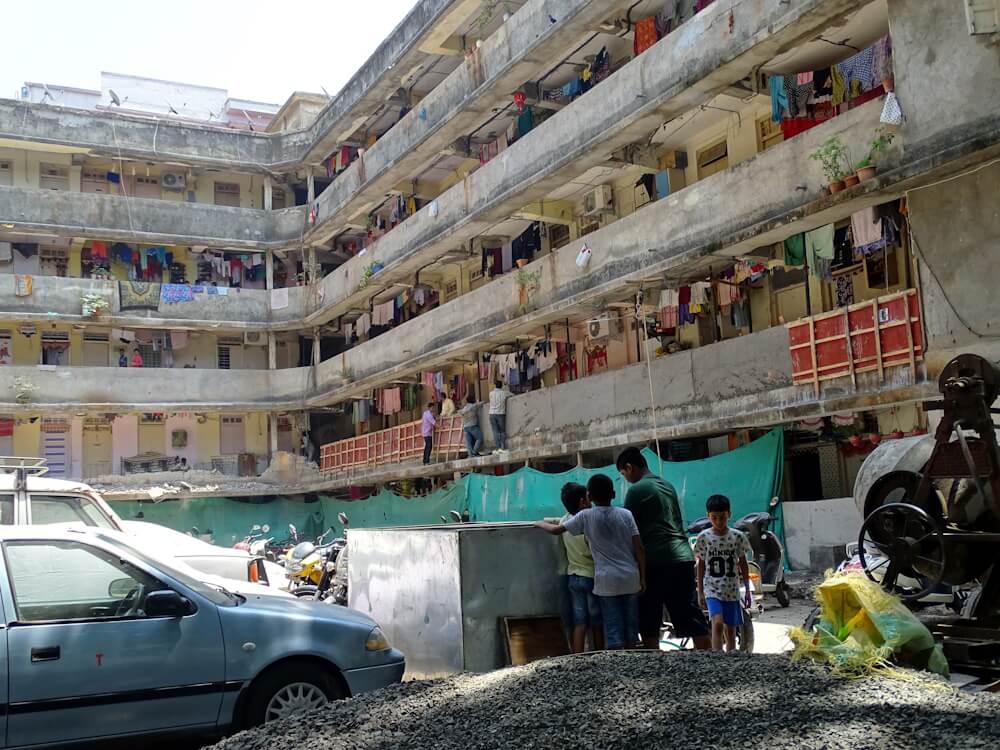
Photo: Adam Jones/Wikimedia Commons
As an architect, I suggest that we begin with architecture education. If studies say that hearing bird sounds every day increases our mental well-being by four times,[14] then we have to teach, design and build for it. We need more outdoor spaces or the commons to socialise, meet the sun and moon, hear the birds. Our well-being comes from these elements, not only from our bank balance.
Finally, the role of urban planning and design in people’s mental well-being starts with a simple mind shift: ‘Make the built environment to make people happy’. We have to accept this and change many of our design parameters to create transition spaces, sociable spaces, and spaces to connect with nature. The current approach is to make a building first and design everything else in leftover spaces. Indeed, architects and planners have a large role to play in making healthy cities.[15] We need to educate – or re-educate – ourselves.
Architectural pedagogy and professional bodies must also reflect on these themes. An important aspect of cities and health is that some of us can afford the health services but many cannot. A city’s health systems need to be equitable and accessible to all. This may not be a planning issue only but our discipline has a role in determining who the city nurtures. The pandemic data shows that, after discounting private hospitals and practitioners, the number of doctors or beds per thousand people is shocking.[16] Yet, private health facilities are built for medical tourism, lucrative that it is.
I do not see room for urban designers and planners to talk about reducing such gaps in urban services unless we collectively lobby for policy changes. Professional platforms like Council of Architecture, the Institute of Town Planners India, the Institute of Urban Designers India, Indian Institute of Architects must prioritise health and well-being on their agendas and lobby too. If it is politically decided that health should be a priority in building cities, then cities will be made that way. There will be a ‘market’ for it. But in India, we have a long way to go.
Nevertheless, as architects, planners and designers, we can campaign to not have slums, question why some have two-three houses when so many live in slums, and advocate services in every lane of the city which contribute to people’s health and well-being. People’s health and well-being should be the key motivators to design the built environment.
Mansee Bal Bhargava is a listener and learner. Her near-three decades of engagement in built environment (architecture design, development, planning, management, and governance) has developed her interests in water worries and wisdom, besides women matters.
Cover photo: An old house with a courtyard. Credit: Vyacheslav Argenberg/Wikimedia Commons

